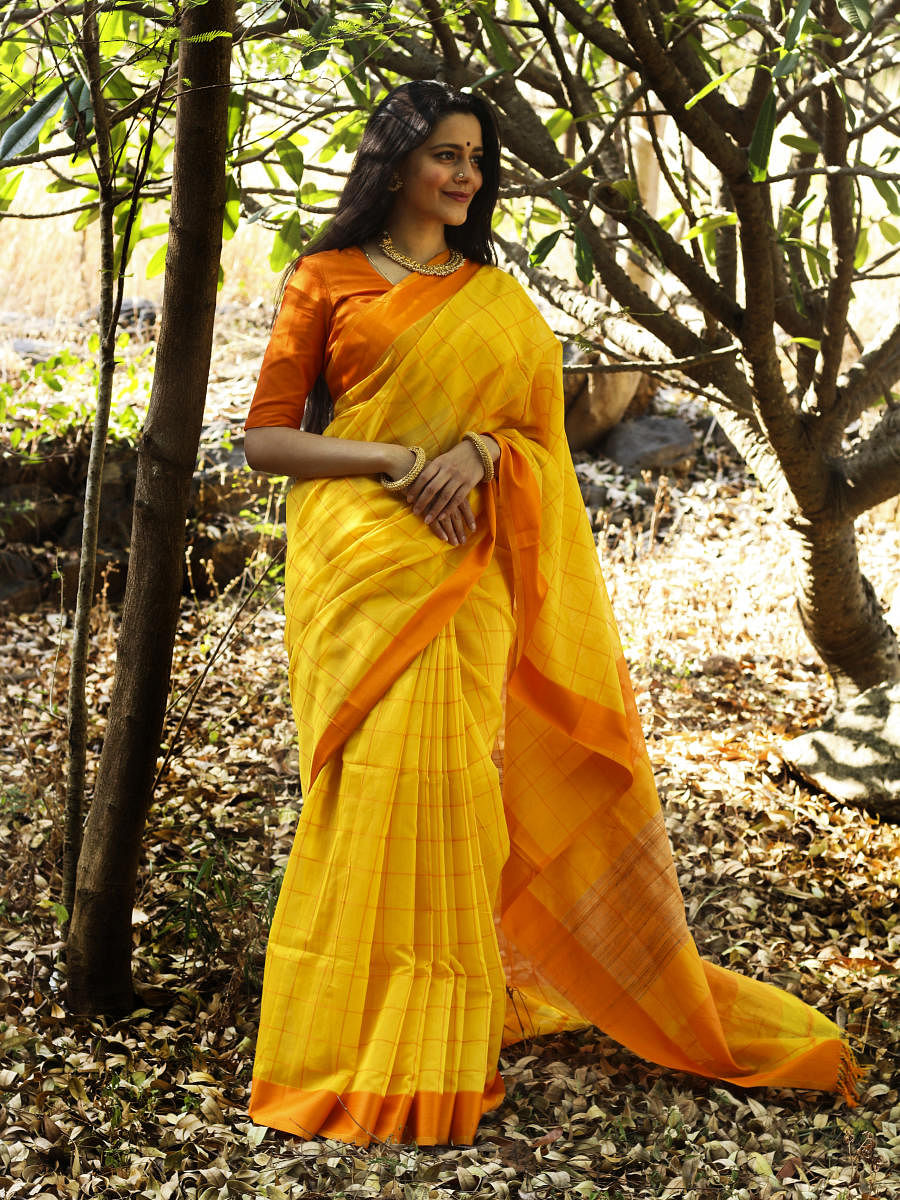
Maheshwari sarees modestly murmur their own stories; a closer look reveals hidden narratives in their design and patterning. Fashioned imaginatively more than two-and-a-half centuries ago by Rani Ahilyabai Holkar, the textiles speak of a rich cultural legacy. The queen was the bride of Khonde Rao (son of Maharaja Malhar Rao) of the Holkar Dynasty, who were the royals of Indore during the British rule in India. The story has it that the young Rani scripted a new economy for the people of Maheshwar when she initiated them into a weaving culture that would be recorded in the pages of history. She gave them a vocation that weathered many a storm.
Says Abhishek Mukati, a second-generation weaver of Jyothi Handlooms in Maheshwar, “A two-hour drive from Indore is Maheshwar, and if you step into our town where river Narmada (locally called Rehwa) flows serene, you will relate to the thousands of patterns seen on our Maheshwari sarees and dupattas. They are all inspired from the meandering waves of the river, and the designs etched on the Fort.”
“That is not all,” adds senior weaver Manish Patel, 2008 National Awardee who steers the Mahishmati Charkha Hatkar Bankar Vikas Samiti at Indore and is an ambassador of the handloom. He has demonstrated the Maheshwari weave in over 15 countries. “The heavenly designs created at the Ahalyabai Palace are ever-inspiring as the 18th century visionary queen had her artisans engrave art on its stone pillars, walls, domed pavilions (chhatris), doors and overhanging balconies (jharokhas).”
A multiplicity of waves
Maheshwari designs include the Narmada leher (waves), stripes, checks and the popular mat or the chattai patterns, along with Chameli Ka Phool. “Even through its long evolution, the eent (brick) and the heera (diamond) patterns have seen a steely survival, especially in its silks. Borders are the mainstay with a multiplicity of waves, as visualised by the Rani. Every trivia is taken from the walls of the Maheshwar Fort and the temples on the banks of the river Narmada. Her Highness had asked weavers to look into the little alcoves and parapets, battlements and turrets of the Maheshwar Fort for design inspirations!” says Manish.
The Maheshwari originally came in five popular weaves in silk and pure cotton — Chandrakala and Baingani Chandrakala, which were plain sarees, and Chandratara, Beli and Parbi, which were characterised by stripes and checks. Textile designers, heritage promoters and social enterprises have stepped in to resurrect history and enliven its designs.
“We source Maheshwari from half a dozen weaving units in Madhya Pradesh as it is a means of women empowerment too,” says Bharathy Harish, Coordinator, Madhurya Creations, a revival boutique spreading awareness through its restoration work with handwoven sarees.
“Maheshwari sarees represent and uphold the culture of the land. Across generations, the weave has remained classic, yet restrained in its finish as the basic interlace outlines a royal legacy,” says Bharathy, adding that weaver tales often speak of how Rani Ahilyabai had avoided having floral motifs commonly used in silk units, and how she had visualised a finer thread-count, ideal for summer and all age groups.
Revival and reinvention
Today, Maheshwari has stood the test of time with thousands of weaver-units thriving. Weavers still use naturally extracted colours from beetroot, tomato, indigo plant and turmeric (along with gold zari) for continuing their exclusive line, while they are also forced to bring in chemical dyes to add colours such as royal blue, orange, mustard and lemon yellow. “Apart from sarees, Maheshwari fabric is used for kurtas, shirts, stoles and dupattas in order to reach out to a larger market,” says Manish.
The weave drastically slowed down during the colonial era of Western leanings, and after India’s Independence, it was still in a catnap.
In 1978, the erstwhile royals, the Holkars of the region, founded the REHWA Society to resuscitate the dying craft. Sally Holkar, a Stanford University graduate, discovered Indian handlooms when she married into the Indore royal family. To further support the community, Sally set up the WomenWeave Charitable Trust and established The Handloom School in Maheshwar.
Loom Chronicles is a new 24-part monthly series on India’s diverse handlooms. Each part will feature a weave, its signature elements and the history hidden within its folds.
The author is a senior journalist who writes on arts, music and culture. She is currently working on a book on native Indian weaves and can be reached at ranjgo@gmail.com